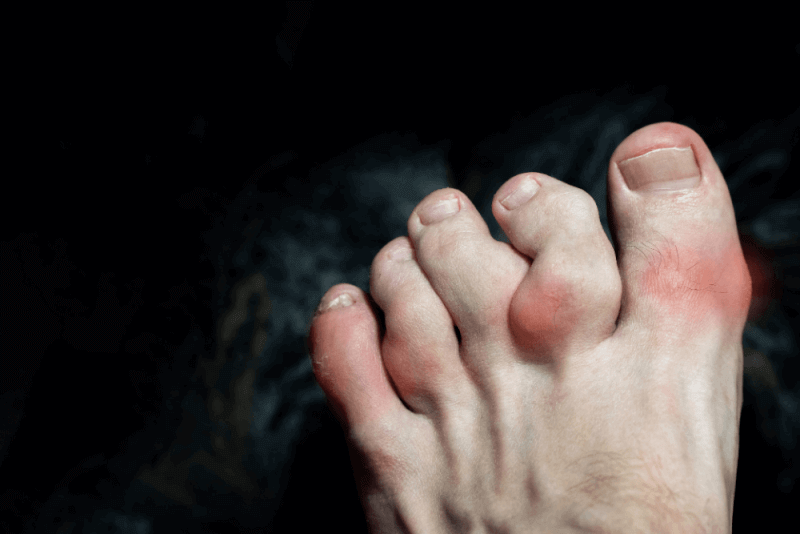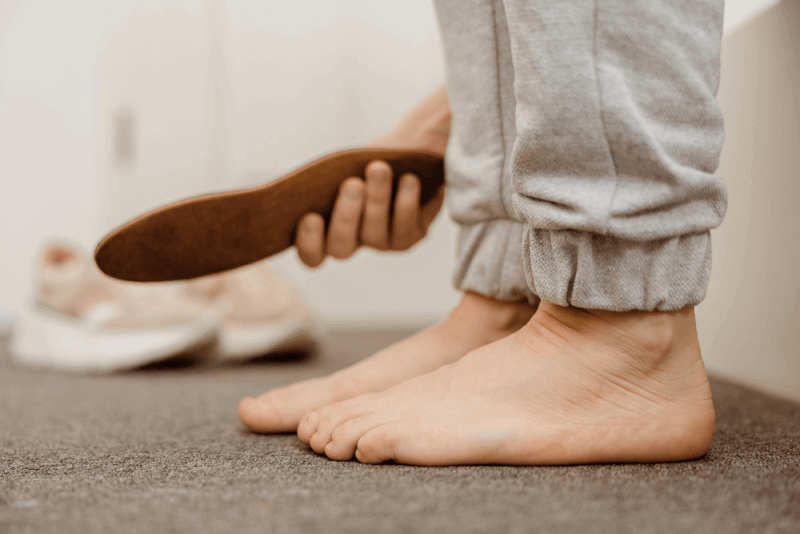30-Second Summary
- The rotator cuff is a group of muscles and tendons that surround the shoulder joint and hold the head of the upper arm bone firmly within the shallow socket of the shoulder.
- Rotator cuff tears commonly occur over time as the tendon wears with age and use. Individuals over the age of 40 are at the highest risk.
- A dull ache may be felt deep in the shoulder, or it may feel like a stabbing pain.
- Surgery may be required if the injury is severe.
What Is Rotator Cuff Syndrome?
The rotator cuff is a group of muscles and tendons that surround the shoulder joint and hold the head of the upper arm bone firmly within the shallow socket of the shoulder. A rotator cuff injury can cause a dull ache in the shoulder that worsens at night.
A rotator cuff tear refers to injuries in the rotator cuff that may cause shoulder pain and limited arm movement. Rotator cuff syndrome is also referred to as a rotator cuff tear.
Causes of Rotator Cuff Syndrome
Accidents such as falls can lead to a rotator cuff tear, a fractured clavicle, or shoulder dislocation. More commonly, rotator cuff tears occur over time as the tendon wears due to age and use. People over the age of 40 are at the greatest risk.
Causes of degenerative tears include:
- Bony growths on the top of the shoulder bone are known as bone spurs. These spurs rub against the tendon when the arm is lifted. This shoulder impingement creates friction between the bone and the tendon, eventually causing a partial or complete tear.
- With age, blood flow to the rotator cuff decreases. Muscles and tendons need a healthy blood supply to repair themselves. Without sufficient blood flow, tendons may tear.
- Repetitive overhead motions during sports or work can strain and tear the muscles and tendons.
Symptoms of Rotator Cuff Syndrome
Symptoms of rotator cuff syndrome may include the following:
- Pain, weakness, or difficulty when lifting, lowering, or rotating the arm
- Weakness in the shoulder
- Difficulty lifting objects
- Popping, clicking, or crackling sounds when the arm is in certain positions
- Shoulder pain that worsens at night or when the arm is at rest
The pain caused by rotator cuff syndrome varies depending on the condition. A dull ache may be felt deep in the shoulder, or it may feel like being stabbed. Sudden tears caused by accidents or trauma can result in immediate severe shoulder pain and arm weakness. In degenerative tears, there may be mild pain that can be managed with over-the-counter pain relievers. Over time, the pain may worsen and no longer respond to medication. Not all patients experience pain, but most will have some degree of restricted movement in the arm and shoulder.
Diagnosis Criteria for Rotator Cuff Syndrome
To diagnose rotator cuff syndrome, specialists first perform a physical examination to check for shoulder tenderness, range of motion, and arm strength. To confirm the diagnosis, the following tests may be requested:
- Although rotator cuff syndrome may not be visible on an X-ray, this test can help rule out bone spurs or other potential causes of pain such as arthritis.
- Ultrasound uses sound waves to create images of the body's structures, particularly soft tissues like muscles and tendons. It allows specialists to assess shoulder movement and quickly compare the affected shoulder with the healthy one.
- Magnetic resonance imaging (MRI) provides detailed images of all the structures in the shoulder.
Treatment Methods for Rotator Cuff Syndrome
In cases of rotator cuff syndrome, conservative treatments are sometimes all that is needed to recover from a rotator cuff injury. If the injury is severe, surgery may be necessary.
Therapy
Physical therapy is often one of the first recommended treatments. Exercises tailored to the specific type of rotator cuff injury can help restore strength and flexibility to the shoulder. Physical therapy is also an important part of recovery after rotator cuff surgery.
Injections
Steroid injections into the shoulder joint are used to reduce nighttime pain and prevent daily activities and physical therapy from being disrupted by pain. Although these injections typically provide temporary relief, they can weaken the tendon and reduce the success of future shoulder surgeries.
Surgery
Several different surgical techniques are used in the treatment of rotator cuff syndrome. Some of these methods include:
- In arthroscopic tendon repair, surgeons use small incisions along with a tiny camera and instruments to access and reattach the torn tendon to the bone.
- Open tendon repair is performed in certain cases to reattach the damaged tendon to the bone.
- Tendon transfer is performed when the torn tendon is too damaged to be reattached to the arm bone, using a nearby tendon as a substitute.
- Shoulder replacement is used in cases of massive rotator cuff injuries. An innovative procedure improves joint stability by placing the ball portion of the artificial joint onto the shoulder blade and the socket portion onto the arm bone.
Exercises
Before starting exercises for rotator cuff syndrome, it is important to warm up for 5–10 minutes with low-impact activities such as walking or riding a stationary bike. After warming up, stretching exercises should be performed before beginning strengthening exercises. Once strengthening exercises are completed, it is essential to stretch again. Pay attention to any pain during the exercises. If pain occurs, consult a specialist.
Pendulum
The main muscles worked in this exercise include the deltoids, supraspinatus, infraspinatus, and subscapularis. No equipment is needed, and it is sufficient to perform this exercise 5-6 times per week. The number of repetitions is 10, and the number of sets is two. The steps of the exercise are as follows:
- Lean forward and place one hand on a counter or table for support. Let the other arm hang down freely at your side.
- Gently swing the arm forward and backward. Repeat the exercise by moving the arm side to side, then continue with circular motions.
- Repeat all steps with the other arm as well.
When performing the exercise, make sure not to hunch your back or lock your knees.
Cross-Body Shoulder Stretch
This exercise targets the posterior deltoid muscle. Therefore, the stretch should be felt in the back of the shoulder. It is sufficient to repeat the exercise four times for each arm. It should be performed 5-6 days a week. The steps of the exercise are as follows:
- Relax the shoulders.
- Gently pull one arm across the chest toward the opposite side. Hold the upper arm during this step.
- Maintain the stretch for 30 seconds, then rest for 30 seconds.
- Repeat the movement with the other arm.
Avoid pulling on the elbow or applying pressure to it during the stretch.
Passive Internal Rotation
The main muscle targeted by this exercise is the supraspinatus. The stretch should be felt at the front of the shoulder. To perform the exercise, a lightweight stick approximately one meter long is used. The steps of the exercise are as follows:
- Place your hands behind your lower back and hold the stick.
- Gently pull the stick to the right side until a passive stretch is felt in the shoulder. The movement should be felt but not painful.
- Hold the position for 30 seconds, then rest for another 30 seconds.
- Repeat the movement in the opposite direction.
While performing the exercise, ensure that you remain upright and avoid turning sideways.
Passive External Rotation
This exercise targets the infraspinatus and teres minor muscles. The stretch should be felt in the back of the shoulder. It is recommended to perform this exercise 5-6 days a week and repeat it four times on each side. A lightweight stick approximately one meter long is required to perform the exercise. The steps are as follows:
- Hold the stick with arms at your sides and elbows bent 90 degrees in front of you.
- Move the stick horizontally to the right.
- Continue moving the stick until you feel a stretch.
- Hold the position for 30 seconds, then rest for another 30 seconds.
- Repeat the movement in the opposite direction.
Make sure not to lean your hips forward during the exercise.
Stretching
This exercise targets the infraspinatus and teres minor muscles. The stretch should be felt in the back and outer upper area of the shoulders. This exercise should be repeated three times per week, with four repetitions per session. The steps are as follows:
- Lie down on the affected shoulder. For added comfort, place a pillow under your head and bend the arm on the floor.
- Using the unaffected arm, gently push the other arm downward. Once a stretch is felt in the back of the affected shoulder, stop pushing.
- Hold the position for 30 seconds, then rest for 30 seconds.
While performing the exercise, avoid bending the wrist or applying pressure to it.
Standing Resistance Band
This exercise targets the middle and lower trapezius muscles. Tension should be felt in the back of the shoulders and upper back. A resistance elastic band is required to perform the exercise. As the exercise becomes easier, you should progress to three sets of 12 repetitions. Patients with access to a gym can also perform this exercise using weight machines. It should be done three times a week. In the beginning, the recommended number of repetitions is 8 with 3 sets. The steps are as follows:
- Tie the resistance band at both ends to form a loop. Attach the loop to a door handle or another stable object.
- In the starting position, hold the band with your elbow bent at your side.
- Slowly pull your elbow backward.
- Then return to the starting position.
While performing the exercise, the shoulder blades should be brought closer together.
External Rotation at 90-Degree Shoulder Abduction
This exercise targets the infraspinatus and teres minor muscles. The stretch should be felt in the back of the shoulder and upper back. A resistance band is required to perform the exercise. As the movement becomes easier, the number of repetitions should be increased to 12. Individuals with access to a gym can also perform this exercise using weight machines. It should be performed three times a week with 8 repetitions and 3 sets initially.
- Form the resistance band into a loop and tie the ends together. Attach the loop to a door handle or a fixed object.
- In the starting position, stand with your elbow bent at 90 degrees and your arm at shoulder level.
- Keeping the shoulder and elbow at the same level, slowly move your hand until it aligns with your head.
- Then return to the starting position.
Ensure that your elbow remains aligned with your shoulder during the exercise.
Internal Rotation
This exercise targets the pectoralis and subscapularis muscles. The stretch should be felt in the chest and shoulder. A resistance band is required to perform the movement. The exercise consists of 8 repetitions and 3 sets. The steps are as follows:
- Form the resistance band into a loop and attach it to a stable surface.
- Stand in the starting position, holding the band with the elbow bent and at your side.
- While keeping the elbow close to the body, move the forearm across the body.
- Slowly return to the starting position.
During the exercise, the elbow should be pressed slightly inward toward the body.
External Rotation
This exercise targets the infraspinatus and teres minor muscles. The stretch should be felt in the back and upper part of the shoulders. A resistance band is needed to perform this exercise. The recommended routine is 8 repetitions and 3 sets. The steps of the exercise are as follows:
- Form the resistance band into a loop and tie the ends together.
- Attach the band to a stable object.
- Stand in the starting position with your elbow bent and at your side.
- Keeping the elbow close to your body, slowly rotate your arm outward.
- Slowly return to the starting position.
How to Prevent Rotator Cuff Syndrome?
To prevent rotator cuff syndrome, it is important to keep the muscles and tendons flexible. This requires regular stretching and strengthening exercises.
Risk Factors for Rotator Cuff Syndrome
The following are risk factors that may increase the likelihood of developing rotator cuff syndrome:
- Family history of rotator cuff syndrome
- Poor posture
- Smoking
- Being over the age of 40
A risk factor that may lead to degenerative tears is performing repetitive shoulder movements.







